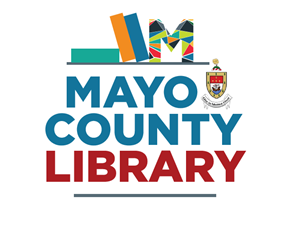Letters in Ireland
Millions of letters were sent back from Irish emigrants to their friends and relatives at home in the nineteenth century. It is estimated that one million letters were sent to America from Ireland in 1854 alone. On its maiden voyage the Titanic collected 1385 bags of letters at Cobh which were destined for America. Letters home were often accompanied by remittances or other items such as tickets, clothes or photos. It has been calculated that €260millon was sent home to Ireland in the nineteenth century. Thus the “American Letter” led to “chain migration” as emigrants provided the fare for their relatives to cross the Atlantic and join them in the New World. The letters mainly discussed family and friends, but also provided an insight into the emigrant’s view of their new country. They often painted an unrealistically bright picture of the life which awaited their friends and relatives across the Atlantic. As James Charles Roy has observed, "The written letter was an indispensable tool for the entire emigrative process: it informed the ignorant, reassured the hesitant and often contained the ultimate inducement to seal a person’s resolve - passage money”.
The arrival of an "American letter” generated huge excitement. Yet few have survived probably due to the fragility of the medium and the lack of importance ascribed to them by subsequent generations who often disposed of them with little thought. The main collections of emigrant letters in Ireland are held in the Public Records Office Northern Ireland (PRONI) and in the Centre for Migration Studies at the Ulster American Folk Park in Omagh. The majority of these letters are from emigrants from Ulster. The Irish Emigration Database was created by the Centre for Migration Studies. It has all sorts of migration related material in it - shipping news, passenger lists, official reports, indentures, emigrant letters, wills and diaries. There are smaller collections in the National Archives and the National Library. The Cork Archives Institute holds a collection of over 120 letters relating to the Hurley family who emigrated to Nevada in the early 1870s. For the EMILE project Mayo County Library has mainly used letters from the PRONI or Centre for Migration Studies collections as well as a few letters from their own resources.
“This is a splendid country”, wrote one Mayo emigrant from Minneapolis in the 1870s, “I can sit at a table as good as the best man in Belmullet thank God that I left that miserable place”
While some letters tended to over exaggerate the new world, most appeared to be reasonably free of embellishment and hyperbole. Where this occurs it could be due to the over enthusiasm of the newly arrived. For example Mary McCarthy, a young girl who landed in New York in 1850, sung the praises of the new world in her first letter to her father:
"My Dr. Father I must only say that this is a good place and A good Country for if one place does not Suit A man he can go to Another and can very easy please himself…… but any man or woman without a family are fools that would not venture and Come to this plentiful Country where no man or woman ever Hungered or ever will and where you will not be Seen Naked”.
See below for a full transcription of Mary McCarthy's letter to her father.
It is noteworthy that she recommends those without a family to emigrate. Old people were often warned to stay away from a country which required such hard work. For example, Andrew Pauley, a young worker in Philadelphia, wrote
to his uncle in Ulster in 1854 that “any young person that could get along well there would do well to
come her, if they intended to conduct themselves decently… but old people have no great chance here”

